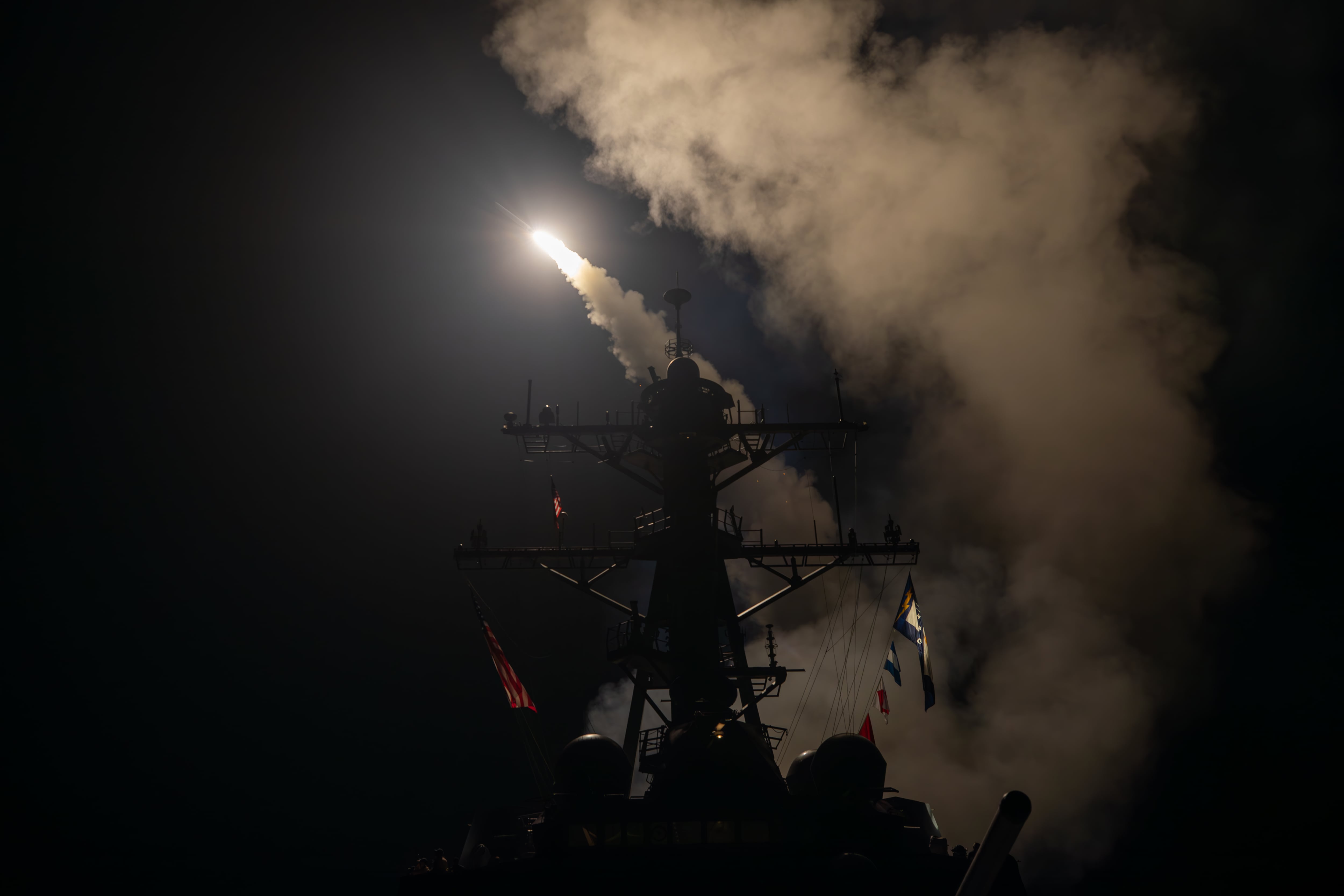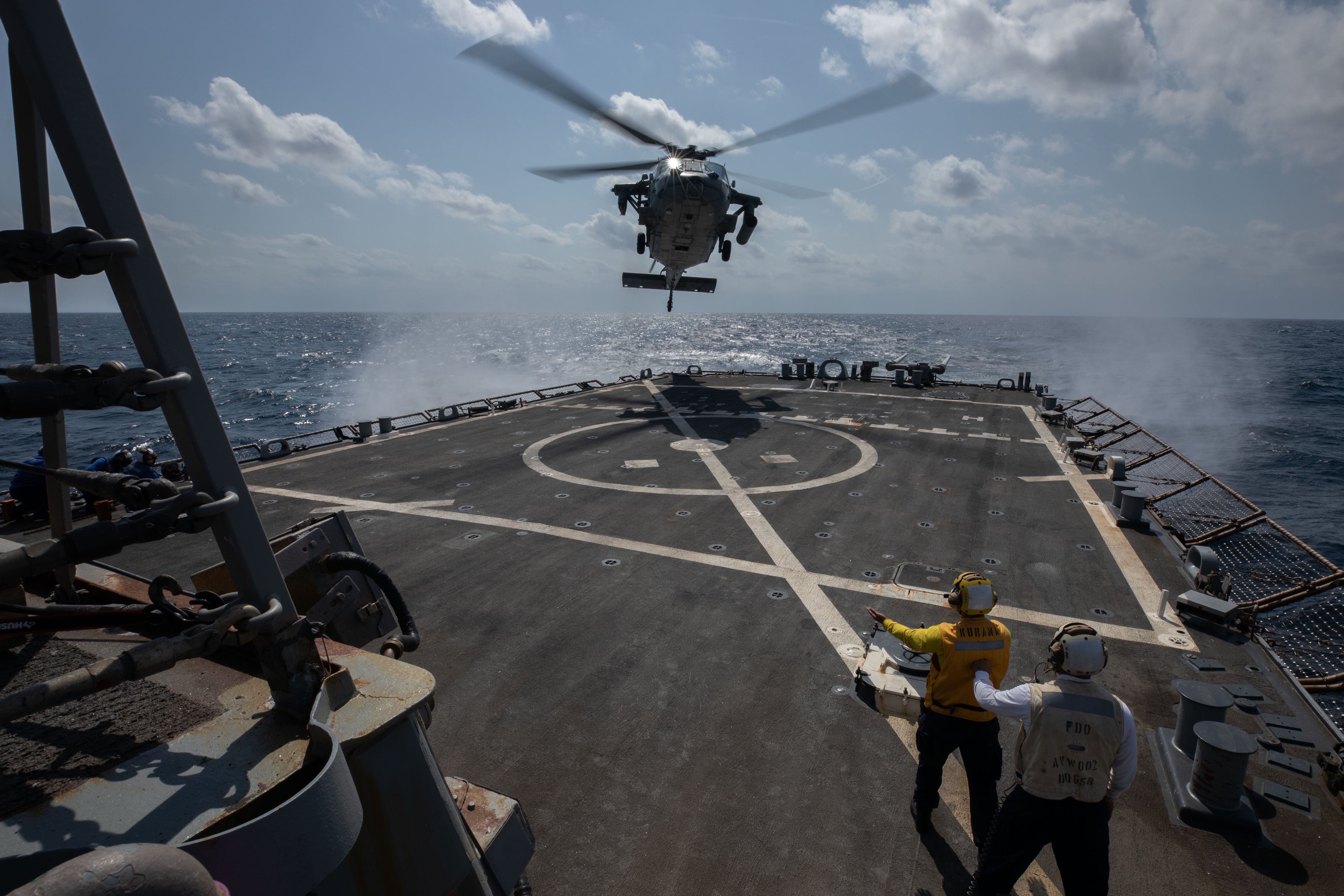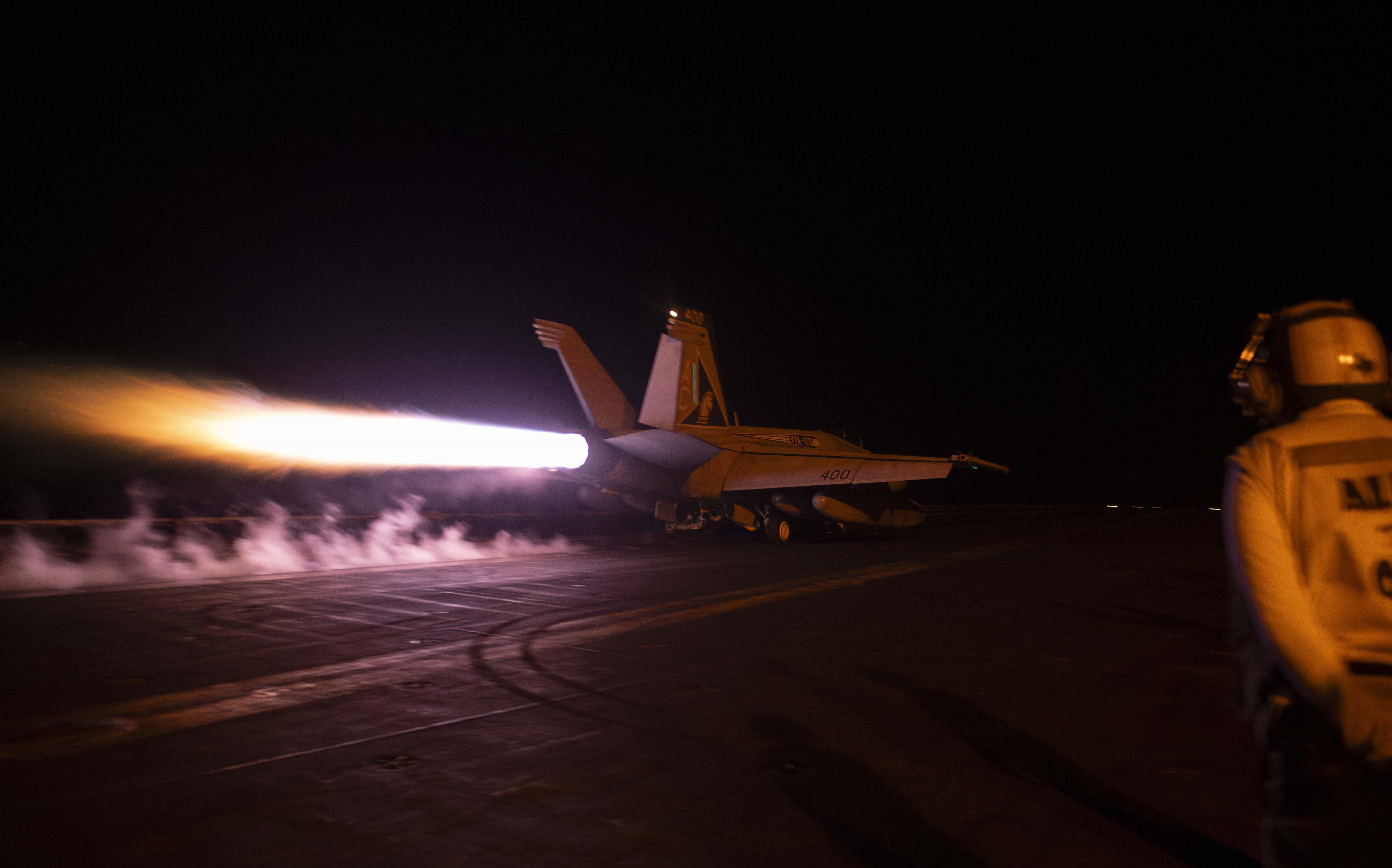The Navy endured a hectic month of engagements with Iran-backed Houthi militants in the Middle East, defending against a steady stream of nearly daily attacks, including what officials said was the first observed use of an underwater attack drone by the Yemen-based group.
Go here for Navy Times’ up-to-date tracker of incidents between the U.S. Navy and the Houthis.
RELATED

As of Wednesday, U.S. and coalition forces destroyed, or tracked the firing, or the intent to launch in February of at least 23 anti-ship ballistic missiles, 61 anti-ship cruise missiles, 17 surface drones, three mobile land attack cruise missiles and 60 air drones that the Houthis launched or were prepared to fire, according to a tally of incidents announced by U.S. Central Command, as well as reporting by Military Times and The Associated Press.
American and allied forces at least twice during the past month — on Feb. 3 and Feb. 24 — led multinational coalition strikes against Houthi targets in Yemen as well.
U.S. forces also took out an underwater drone on February 17, an unmanned system which CENTCOM stated had not previously been employed by the Houthis since their aggression against commercial and military ships in the Red Sea and the Gulf of Aden began in October.
While the use of undersea drones is not in and of itself a game changer when it comes to naval warfare, it could represent a substantial step in Houthi capability, according to Bryan Clark, a retired submariner and senior fellow at the Hudson Institute think tank.
“There isn’t a good defense against them other than speed or maneuver, and cargo ships can’t use either in the Red Sea,” Clark told Military Times.
Among the other harrowing episodes to emerge in the last few weeks, the Houthis launched two anti-ship ballistic missiles at the M/V Rubymar on Feb. 18.
CENTCOM said the attack on the Belize-flagged, U.K.-owned bulk carrier caused damage that led to an 18-mile oil slick, and warned that spillover of more than 41,000 tons of fertilizer the vessel was carrying could lead to “environmental disaster.”
In light of the nearly uninterrupted number of attacks this past month from the Houthis, some lawmakers on Capitol Hill remain skeptical of President Joe Biden’s strategy to deter the assaults and questioned whether the U.S. has the authority to perform its ongoing operation against the recently-designated terrorist group without congressional authorization.

“If we believe this is a just military action, and I do, then we should authorize it,” Sen. Chris Murphy, D-Conn. said during a hearing Tuesday.
“But we also need to acknowledge there is a real risk of escalation in the Red Sea, especially since Iran is unquestionably aiding the actions of the Houthis,” Murphy said. “Thus an authorization is important to legalize the existing operations but also guard against an unauthorized mission creep.”
A top administration official for the region countered during the hearing that actions approved by the president are within the scope of his constitutional authorities as commander-in-chief.
Meanwhile, the Department of the Treasury this week, in partnership with the United Kingdom, announced sanctions against a deputy commander of Iran’s Islamic Revolutionary Guard Corps’ Quds Force and a Houthi militant member.
Navy Times editor Geoff Ziezulewicz contributed to this report.
Jonathan is a staff writer and editor of the Early Bird Brief newsletter for Military Times. Follow him on Twitter @lehrfeld_media





